Mysteries of ancient Passover prayers unfold, bridging millennial beliefs with today's observance, inviting a deeper exploration into their enduring spiritual significance.
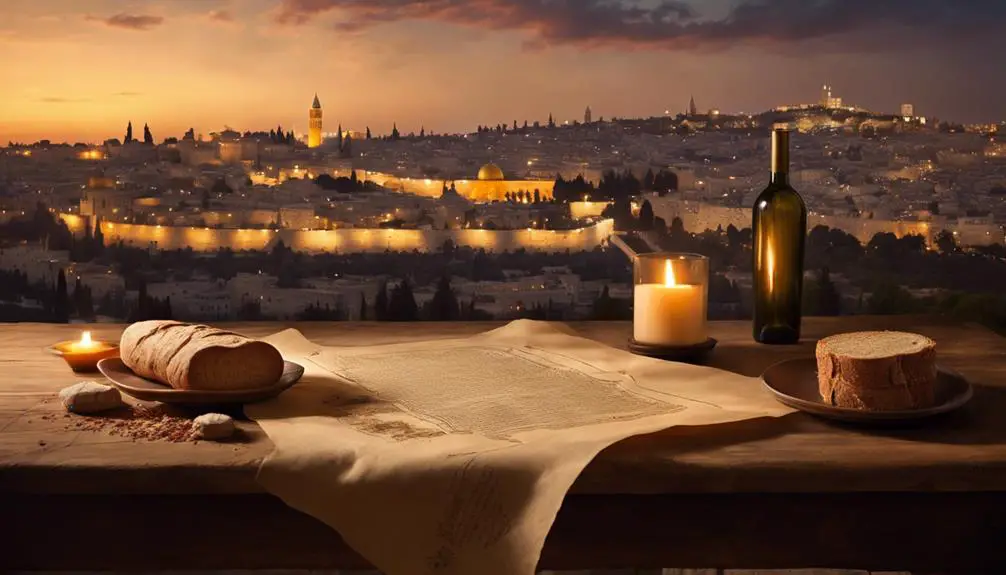
Passover Prayer in the Bible
Have you ever wondered about the whispers of ancient prayers that have echoed through time, especially during Passover? You're not alone in your curiosity.
The Passover prayers, deeply rooted in the Bible, offer a profound glimpse into the history and spiritual fabric of a people bound by faith and tradition. From the historical backdrop to the Seder rituals, each element holds a treasure trove of meaning waiting to be uncovered.
But what makes these prayers so significant, and how have they evolved to fit into modern observance across cultures? Let's embark on a journey to explore this rich tapestry, where ancient words meet contemporary practices, and discover why these prayers continue to resonate with millions around the globe.
Key Takeaways
- Passover prayers in the Bible reflect themes of redemption, gratitude, and liberation from slavery.
- Biblical Passover prayers enhance spiritual connection and deepen faith through reflection on the Israelites' exodus.
- The Seder plate and its symbolic foods, rooted in biblical traditions, engage participants in recounting the Exodus story.
- Modern adaptations and interpretations of Passover prayers maintain their relevance and enrich understanding of biblical narratives.
Historical Background of Passover
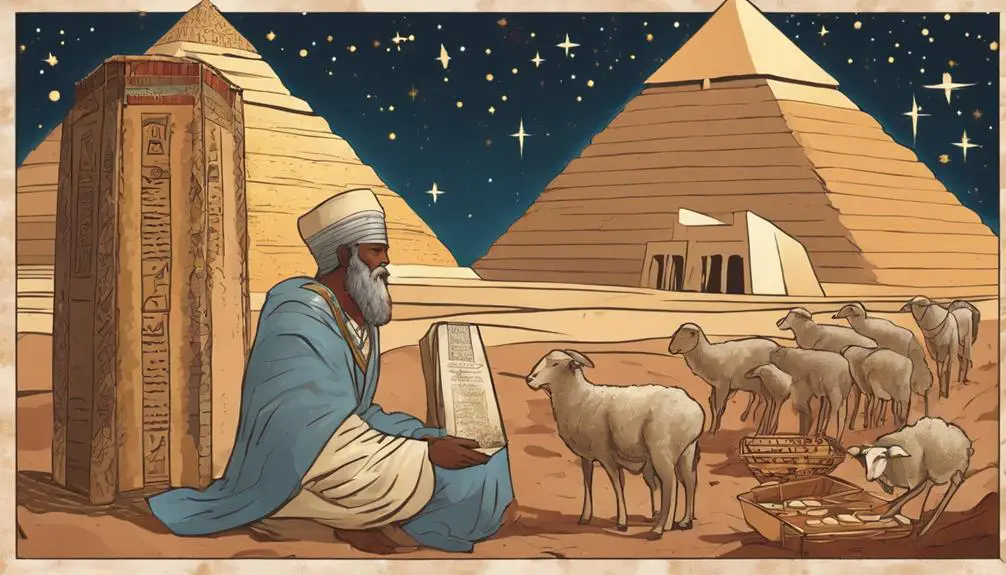
Passover, rooted in ancient history, commemorates the Israelites' exodus from Egypt, a pivotal event that shaped Jewish identity and religious practices. This festival's Egyptian origins are deeply intertwined with the collective memory of oppression and subsequent liberation. You'll find that the narrative of Passover is rich with stories of resilience and faith, particularly highlighted through the Plague narratives, which symbolize divine intervention and the struggle for freedom.
Analyzing the Plague narratives, you encounter a series of calamities that befell Egypt, each serving as a testament to the power struggle between the divine and the earthly Pharaoh's obstinacy. These narratives not only underscore the severity of the Israelites' conditions but also emphasize the significance of faith and divine will in overcoming adversity. The Egyptian origins of Passover, coupled with the recounting of the Plagues, provide a profound backdrop for understanding the deep historical and spiritual layers of this observance.
In delving into this historical background, you engage with a story that transcends time, reminding us of the enduring human quest for freedom and dignity. The Plague narratives, in particular, serve as a poignant reminder of the costs of tyranny and the resilience of faith.
The Significance of Prayer
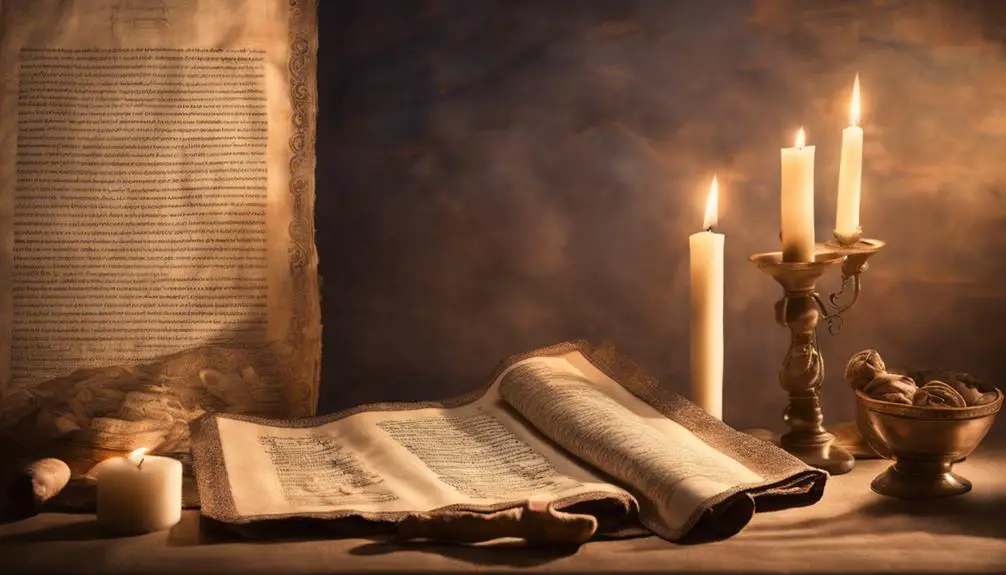
Amid the rich tapestry of Passover traditions, prayer emerges as a cornerstone, deeply entwined with the festival's essence of liberation and divine connection. You'll find that through prayer, you're not just reciting words; you're cultivating a profound relationship with the divine, engaging in a spiritual practice that fosters growth and understanding.
Aspect |
Impact on Individual |
|---|---|
Prayer benefits |
Enhances personal spirituality |
Spiritual growth |
Deepens understanding of faith |
Prayer benefits you by offering a moment of reflection, a pause in the whirlwind of daily life, allowing you to connect with your inner self and the higher power. This act of communication is not one-sided; it's an interactive dialogue that strengthens your faith and personal spirituality.
Moreover, the path of spiritual growth is paved with the prayers you offer during Passover. Each word spoken is a step towards a deeper understanding of your faith, a journey that enriches your spiritual life. Through prayer, you're not only commemorating a historical event but also internalizing its lessons, making them a part of your spiritual identity.
In essence, the significance of prayer during Passover cannot be overstated. It's a tool for liberation, not just from physical bondage, but from spiritual stagnation, guiding you towards enlightenment and a more profound connection with the divine.
Traditional Passover Prayers
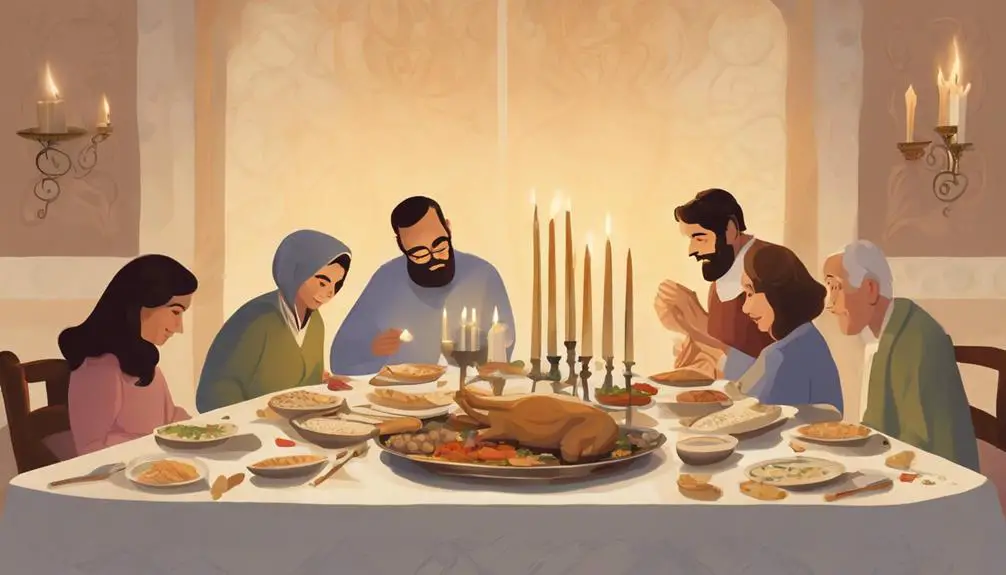
Exploring the traditional prayers of Passover reveals how they serve as vital links to our ancestors, encapsulating the essence of liberation and divine connection celebrated during this festival. These prayers, passed down through generations, not only reflect the historical journey from slavery to freedom but also embody the diversity and richness of Jewish culture.
To appreciate the depth and variety of these prayers, consider the following aspects:
- Prayer Variations: Across different Jewish communities, you'll find variations in the prayers recited during Passover. These differences can be subtle, like variations in melody or phrasing, or more pronounced, reflecting the unique historical and cultural experiences of each community.
- Language Diversity: While Hebrew is the primary language of Passover prayers, many communities incorporate other languages. This bilingual or multilingual approach ensures the prayers are accessible, allowing participants to connect more deeply with their meanings.
- Theological Richness: The prayers of Passover are steeped in theological themes, from redemption and gratitude to the ongoing quest for freedom and justice in the world. They invite reflection on personal and collective liberation.
Understanding these aspects enriches your appreciation of Passover prayers, highlighting their role in fostering a sense of continuity, community, and spiritual renewal.
The Seder Ritual Explained
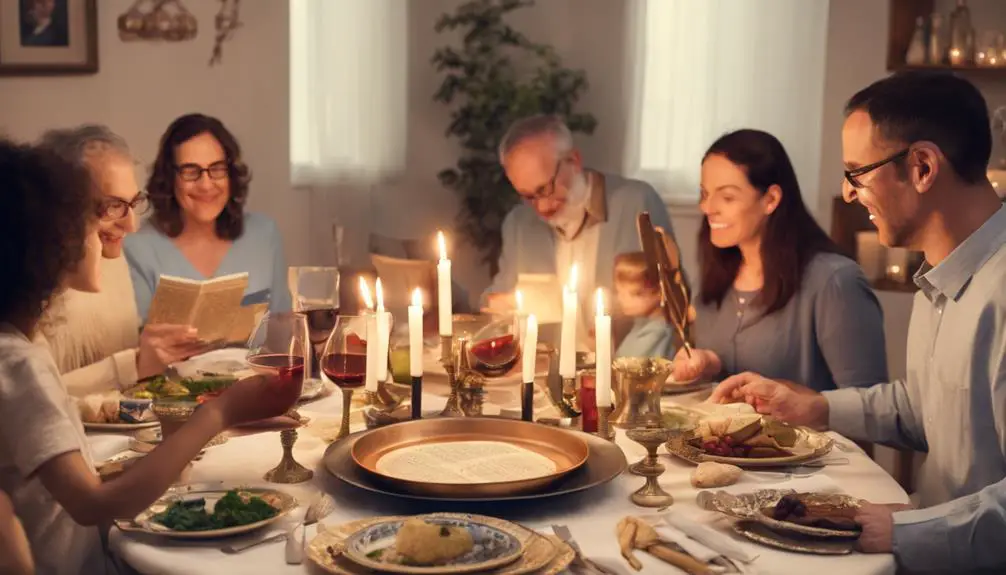
At the heart of Passover, the Seder ritual embodies a multifaceted celebration that invites participants to delve into the story of liberation and renewal. You'll find that each element of the Seder, from the items on the Seder plate to the Afikoman search, is rich with symbolism and designed to engage all your senses in the recounting of the Exodus story.
The Seder plate itself is a canvas of symbolic foods, each representing a facet of the Israelites' experience in Egypt and their journey to freedom. Here is a brief overview:
Symbol |
Meaning |
|---|---|
Maror (Bitter Herbs) |
The bitterness of slavery |
Charoset |
The mortar used by slaves in building |
Karpas |
Spring and renewal |
Zeroa (Shank Bone) |
The Passover sacrifice |
Beitzah (Roasted Egg) |
The cycle of life and mourning |
During the Seder, you'll also partake in the Afikoman search, a playful yet profound reminder of the continuity of tradition and the importance of seeking and finding. This search not only captivates the younger participants but symbolizes the ongoing quest for freedom and knowledge.
Through analyzing the Seder plate symbolism and the Afikoman search, you uncover layers of meaning within the Passover narrative, deepening your understanding and connection to this ancient ritual.
Modern Interpretations
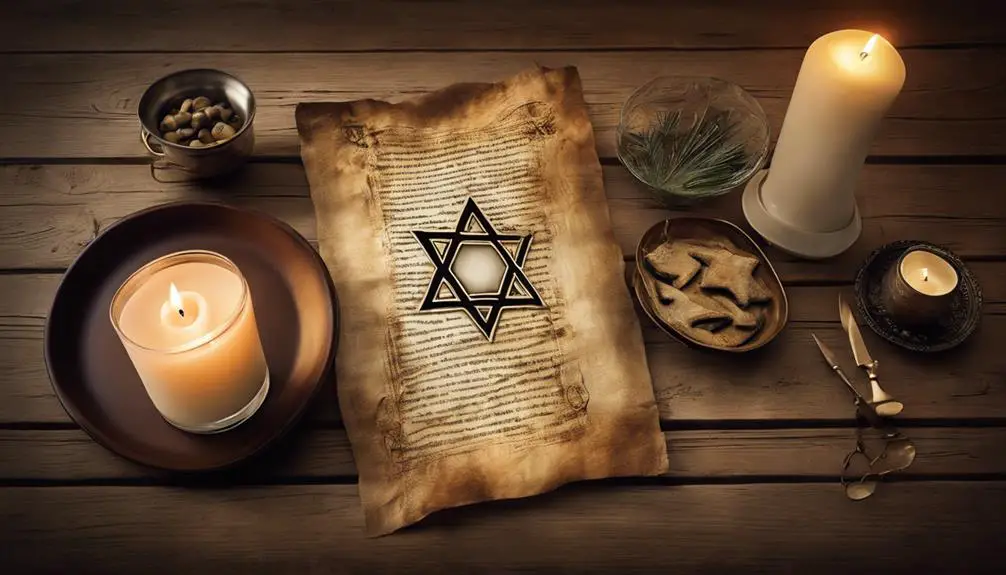
While the Seder plate and the Afikoman search offer a traditional lens through which to understand Passover, modern interpretations invite you to consider how these ancient symbols can reflect contemporary issues and personal growth. In embracing these interpretations, you enrich your understanding of Passover, making it deeply relevant in today's world.
Here are three key aspects of modern interpretations:
- Digital Adaptation: In an era where digital platforms dominate, the Passover experience has evolved. Online Seder gatherings and digital Haggadahs make the celebration accessible, allowing you to connect with distant loved ones and explore diverse interpretations of the Passover story.
- Interfaith Perspectives: Engaging with interfaith perspectives on Passover opens up a dialogue about freedom, redemption, and the universal struggle against oppression. This approach enriches your understanding by incorporating diverse viewpoints and fostering a sense of unity among different communities.
- Contemporary Issues Reflection: Modern interpretations encourage you to use the Passover story as a lens to examine current social, political, and personal challenges. This reflection prompts a deeper engagement with the themes of liberation and justice, making the ancient festival relevant to today's struggles for freedom and equality.
Observance Across Cultures
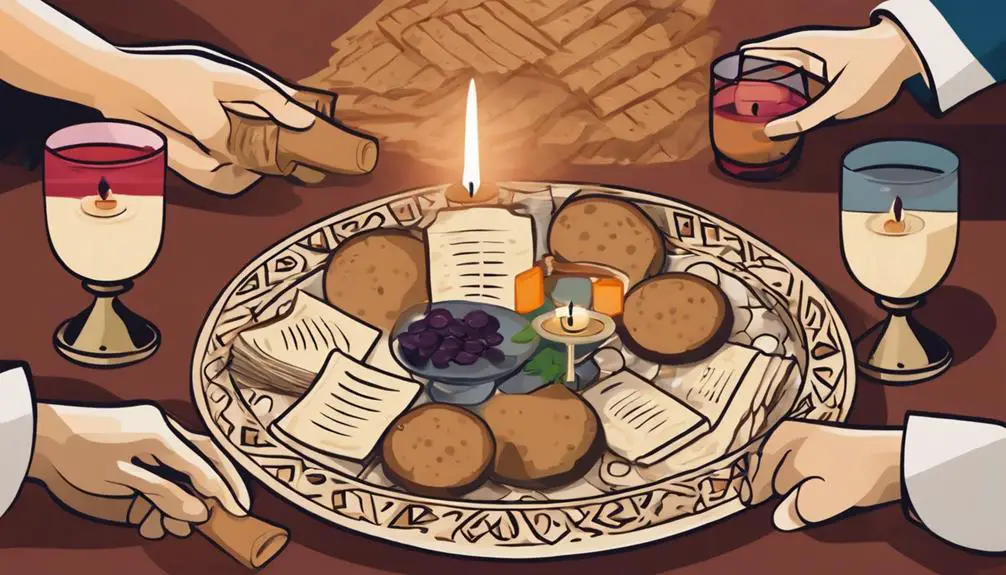
Passover's observance transcends geographical boundaries, revealing a tapestry of cultural practices that enrich its universal themes of freedom and redemption. You'll find that cultural adaptations and international variations of Passover celebrations reflect the diversity of the Jewish diaspora, yet underscore a shared historical and spiritual heritage. These adaptations are not mere alterations; they're embodiments of the resilience and dynamism of Jewish traditions as they interact with local cultures around the globe.
Here's a brief overview of how Passover is observed across different cultures:
Country |
Unique Tradition |
Significance |
|---|---|---|
Ethiopia |
Breaking of all dishes used throughout the year |
Symbolizes a complete break from chametz (leavened bread) and a fresh start |
Gibraltar |
Addition of brick dust to haroset |
Represents the bricks made by the Israelites as slaves in Egypt |
Italy |
Serving artichokes |
Reflects local produce; incorporates the bitterness of slavery |
Morocco |
Passing over of a Passover plate above the heads of guests |
Symbolizes the angel of death passing over the Israelites' homes |
These international variations showcase the dynamic interplay between universal Passover themes and local customs, enriching the observance and understanding of this ancient festival.
Frequently Asked Questions
How Do Contemporary Dietary Restrictions, Such as Veganism or Gluten Intolerance, Affect the Preparation and Consumption of Traditional Passover Foods?
You're navigating how contemporary dietary restrictions like veganism or gluten intolerance impact traditional Passover foods. It's about balancing respect for ancient recipes with modern substitutions.
You'll find that many are adapting these time-honored dishes using gluten-free matzo or plant-based alternatives to meat. This approach maintains the meal's symbolic significance while ensuring inclusivity.
Analyzing this evolution reveals a respectful blend of tradition and contemporary dietary needs, enriching the Passover experience.
Can Passover Prayers and Rituals Be Adapted for Interfaith Families Who Wish to Honor the Holiday While Respecting Multiple Religious Traditions?
Yes, you can adapt Passover prayers and rituals for interfaith families, fostering cultural adaptation and interfaith dialogue. By balancing tradition with inclusivity, you're creating a space that honors multiple religious traditions.
This approach requires thoughtful consideration and respect for all participants' beliefs. It's about finding common ground and celebrating shared values.
Through this, you're not just observing a holiday; you're enriching it with diverse perspectives and deepening the communal experience.
What Are the Legal Implications of Observing Passover in Public Schools or Workplaces, Especially in Countries With Strict Separation of Church and State?
When observing Passover in public schools or workplaces, you're navigating tricky legal waters, especially in countries with firm church-state separation. School policies must balance religious freedom with secular principles, ensuring inclusivity without endorsing a specific faith.
Workplace diversity initiatives can foster an environment where Passover celebrations are respected alongside other traditions. However, it's crucial to consult legal guidelines to avoid inadvertently crossing boundaries that could lead to discrimination claims.
How Has the Digital Age and the Use of Social Media Platforms Influenced the Way Passover Is Celebrated and Shared Among Communities Worldwide?
In today's digital age, the way you celebrate and share Passover has transformed, making the world your oyster.
With digital literacy on the rise, social media platforms have become a pivotal tool for community outreach, allowing traditions to be shared far and wide.
This digital shift hasn't only preserved traditions but also enriched them, providing a space for global communities to connect, learn, and celebrate together in innovative and meaningful ways.
Are There Psychological Benefits or Impacts Associated With Participating in Passover Rituals, Such as Reading Prayers or Conducting the Seder, for Individuals and Families?
When you participate in Passover rituals, you're not just observing tradition; you're engaging in practices that can boost your emotional resilience and foster community bonding.
Reading prayers or conducting the Seder offers psychological benefits by creating a sense of belonging and continuity. These activities serve as anchors, providing stability and comfort in times of turmoil.
They promote a collective identity, enhancing your connection to others and strengthening family ties.
Conclusion
In the grand tapestry of human spirituality, Passover prayers stand as towering monuments of faith, echoing through the corridors of history with a resonance that shakes the foundations of the soul.
Your journey through the Seder ritual, a kaleidoscope of ancient tradition and modern interpretation, bridges worlds, cultures, and epochs.
As the prayers ascend, they weave a celestial tapestry, binding the human experience in a symphony of divine communion that transcends the mere act of observance, elevating it into the realm of the transcendent.

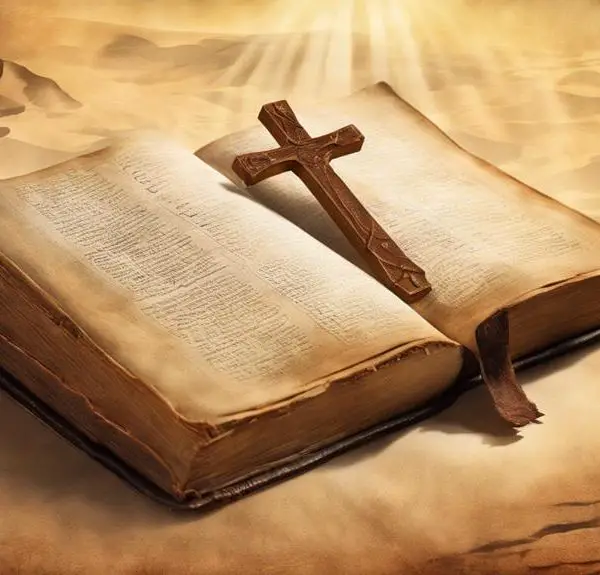

Sign up